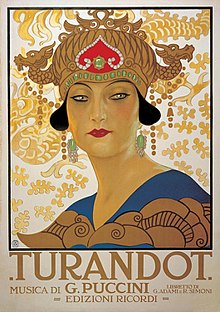Turan
In ancient Iranian mythology, Tūr or Turaj (Tuzh in Middle Persian)[6][better source needed] is the son of the emperor Fereydun.
[7][8] Turan, therefore, comprised five areas: the Kopet Dag region, the Atrek valley, parts of Bactria, Sogdia and Margiana.
[9] A later association of the original Turanians with Turkic peoples is based primarily on the subsequent Turkification of Central Asia, including the above areas.
[12] The oldest existing mention of Turan is in the Farvardin yashts, which are in the Young Avestan language and have been dated by linguists to about 2500 years ago.
[13] According to Gherardo Gnoli, the Avesta contains the names of various tribes who lived in proximity to each other: "the Airyas [Aryans], Tuiryas [Turanians], Sairimas [Sarmatians], Sainus [Sacae] and Dahis [Dahae]".
Their presence accompanied by incessant wars with the Iranians, helped to define the latter as a distinct nation, proud of their land and ready to spill their blood in its defense.
[24] From the 5th century CE, the Sasanian Empire defined "Turan" in opposition to "Iran", as the land where lay its enemies to the northeast.
Just as a leopard sights its prey.In the 19th and early 20th centuries, Western languages borrowed the word Turan as a general designation for modern Central Asia, although this expression has now fallen into disuse.
Turan appears next to Iran on numerous maps of the 19th century[29] to designate a region encompassing modern Uzbekistan, Kazakhstan, Kyrgyzstan, Tajikistan, Turkmenistan and northern parts of Afghanistan and Pakistan.
[35] In European discourse, the words Turan and Turanian can designate a certain mentality, i.e. the nomadic in contrast to the urbanized agricultural civilizations.
matches the Zoroastrian concept of the Tūrya, which is not primarily a linguistic or ethnic designation, but rather a name of the infidels who opposed the civilization based on the preaching of Zoroaster.
And of the latter, he is better provided with those that conduce to the acquisition of knowledge than the origination of ideas.Polish philosopher Feliks Koneczny claimed the existence of a distinctive Turanian civilization, encompassing both Turkic and some Slavs, such as Russians.
[citation needed] In the declining days of the Ottoman Empire, some Turkish nationalists adopted the word Turanian to express a pan-Turkic ideology, also called Turanism.
As of 2013[update] Turanism forms an important aspect of the ideology of the Turkish Nationalist Movement Party (MHP), whose members are also known as Grey Wolves.
], the word Turanian has sometimes expressed a pan-Altaic nationalism (theoretically including Manchus and Mongols in addition to Turks), though no political organization seems to have adopted such an ambitious platform.
Turan is also a common name in the Middle East, and as family surnames in some countries including Bahrain, Iran, Bosnia and Turkey.
Turaj, whom ancient Iranian myths depict as the ancestor of the Turanians, is also a popular name and means Son of Darkness.





